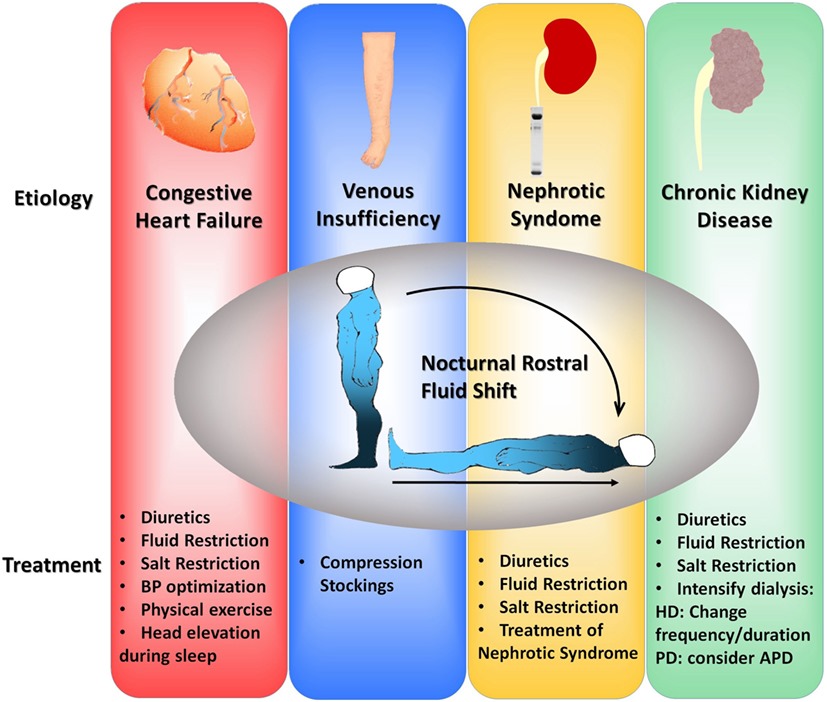
Edema and Obstructive Sleep Apnea
Edema and Obstructive sleep apnea
(OSA) is increasingly recognized as a probable cause of chronic, bilateral leg edema.1 Approximately 25% of adults have OSA,2 and 68.7% of older adults with insomnia have OSA.3 As the severity of OSA increases, patients with edema are more likely to be older and obese and more likely to have hypertension and diabetes mellitus.4 Primary care clinicians must consider the diagnosis of sleep apnea when evaluating any patient with bilateral lower-extremity edema, especially a patient with complications of long-standing edema. Carbon dioxide build-up causes peripheral vasodilation and pulmonary vasoconstriction to facilitate better perfusion of muscles and faster oxygen exchange. This works well while exercising, and the muscles pump the blood back to facilitate faster oxygen exchange in the pulmonary bed. If, however, the carbon dioxide builds up from sleep apnea, the pulmonary vasoconstriction leads to blood backup in the periphery and pedal edema.
Use of the STOP-BANG screening tool should be considered in patients with lower-extremity edema to screen for OSA.1
Snoring
Tiredness
Observed stopped breathing
Pressure, blood
BMI >35 kg/m2
Age >50 years
Neck circumference >16 inches (40 cm)
Gender, male
Patients with bilateral leg edema and normal left ventricular systolic function may be misdiagnosed or underdiagnosed as having idiopathic edema, venous insufficiency, lymphedema, or diastolic dysfunction.5 OSA is associated with bilateral leg edema and obesity, regardless of the presence of pulmonary hypertension and/or left ventricular dysfunction; however, older age and longer duration of OSA are important variables in the development of pulmonary hypertension.5
CPAP treatment reduces leg edema, allowing patients to discontinue diuretic medication.5,6 Daytime somnolence may not be required for proper evaluation and treatment of OSA, although it is most often associated with OSA.4,5 It may be appropriate to expand the indications for evaluating patients for OSA who have venous stasis ulcers, cellulitis, or stasis dermatitis, whether they have daytime somnolence or not.


Leave a Reply